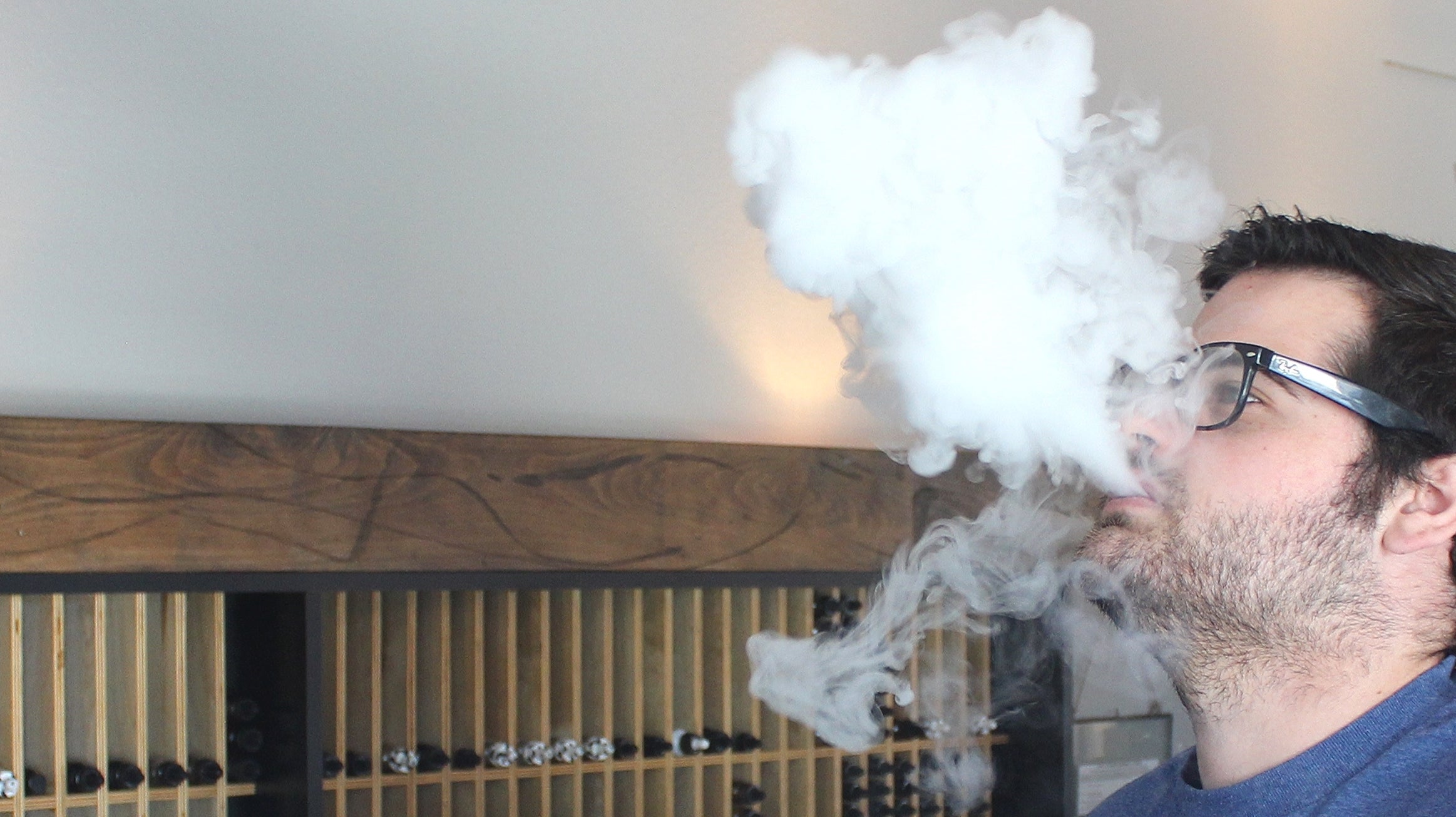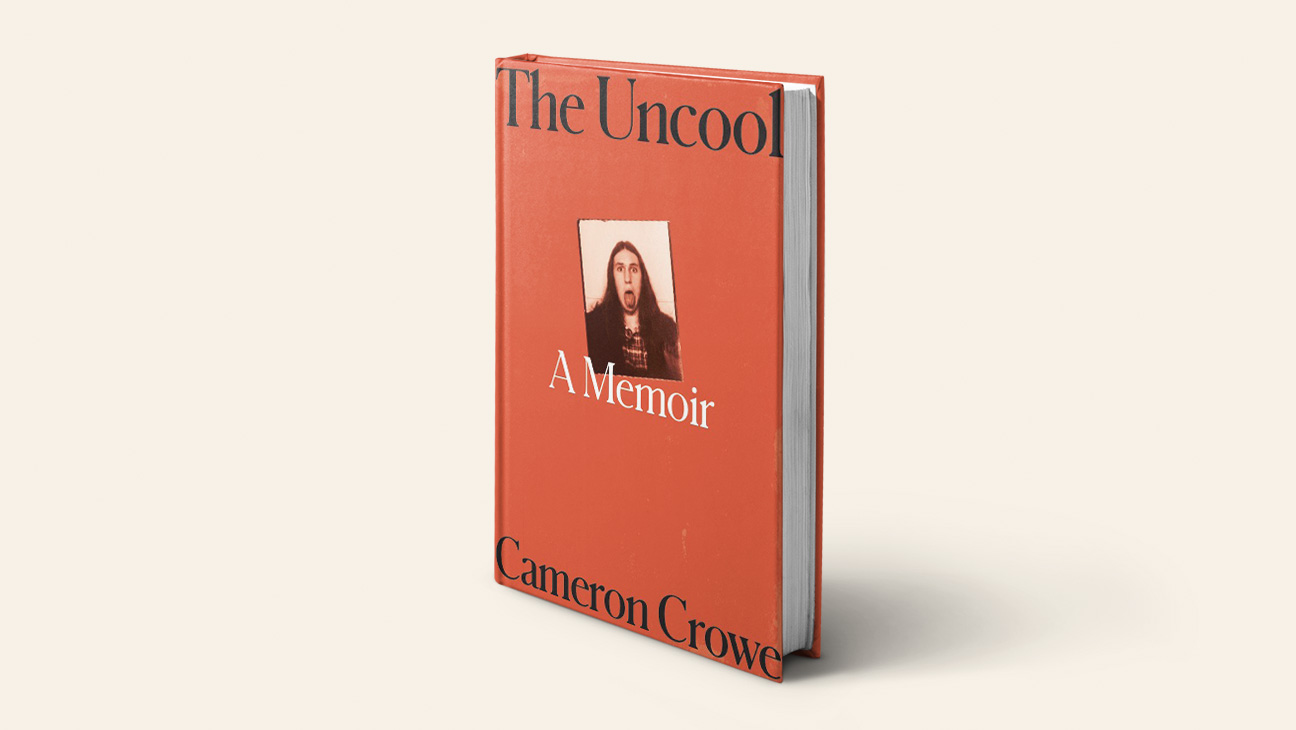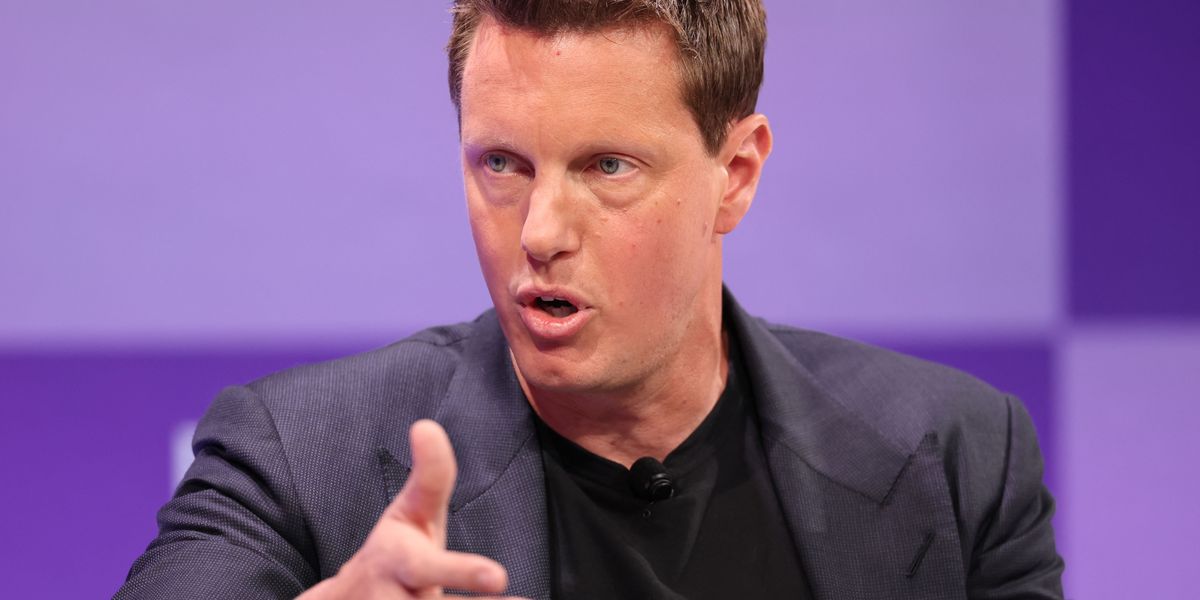Cameron Crowe’s new memoir The Uncool focuses on his years spent as a wunderkind rock journalist for Rolling Stone and other publications, delving into his time capturing the height of ’70s rock with subjects like David Bowie, Led Zeppelin and Joni Mitchell. The memoir also touches on the beginning of Crowe’s career in Hollywood. After taking a break from journalism, Crowe spent a year posing as a student at a San Diego high school for project that would become the book (and eventually the movie) Fast Times at Ridgemont High. Crowe spent 1979 back in high school, but when he sat down to write, he was having a hard time getting started.
Two months later, a year of research and writing had amounted to a tall stack of yellow legal tablet sheets in search of a guiding principle. All trees and no forest. I sat in the living room and read the chapters aloud to my mom and dad. It was my mom’s idea to divide the stories into small chapters. Sitting in the living room at Friars Village, working with my mom and dad, I whittled it down to succinct chapters.
It became a family endeavor.
I decided to call the book Stairway to Heaven in tribute to the Led Zeppelin tour that had never made it to San Diego. I sent the manuscript to New York on a Monday and didn’t hear anything for two weeks. Then came the first report. A senior editor known as the “Warrior King” of publishing read it first. He lived up to his name. His withering response: “I don’t know what it is. But I know what it’s not—it’s not Catcher in the Rye.”
Eventually the manuscript fell into the hands of a younger editor named Susan Bolotin. She found it surprisingly funny. The book that began as an experiment in documenting the secret lives of teenagers, the life I hadn’t lived myself, finally found a champion. One of the higher-ups felt my title Stairway to Heaven would be confused with the 1939 movie of the same name. Soon we had a new title, Fast Times at Ridgemont High. When the first few hardcover copies landed on my doorstep, I packaged one up in a big manila envelope. I had acquired the address of J. D. Salinger’s post office box (32) in Windsor, Vermont, where he picked up his mail. Salinger loathed those who tried to find him, but I took a shot and wrote a long letter from my heart that included a Hail Mary request for an interview. I was so happy with the letter; I was sure it would win a response. Ten days later, my package was returned unopened. On the postal sticker, in the box marked “Package Refused,” was J. D. Salinger’s scrawled initial: “J.”
It was almost as good as a yes.
J. D. Salinger’s rejection sent me on a jag of sending letters to important cultural figures. Mostly I sent a copy of their own autobiography along with a request for an inscription. Richard Nixon immediately returned my copy of his book RN, lavishly dedicated and signed with what I thought was “Love, Richard Nixon.” (I later realized I’d read his penmanship incorrectly. It was actually “Yours, Richard Nixon.”) Others who returned their books personally signed: General Alexander Haig, Jimmy Carter, Gerald Ford, Woody Allen, Seymour Hersh and Ronald Reagan. James Brown sent back a card from prison, signed “GFOS” (Godfather of Soul). Eerily, Sammy Davis Jr.’s Yes I Can arrived on my doorstep with an upbeat dedication a week after his death.
Meanwhile, Fast Times at Ridgemont High was optioned for a movie. The producer was Art Linson, a former rock manager I’d met when he managed Nils Lofgren. Linson had a renegade spirit and a rock and roll heart, and was part of a new wave of younger filmmakers that included Hal Ashby and Jonathan Demme. Knowing I was the least expensive option, he suggested the studio hire me to write the screenplay. For months, Linson showed me the screenwriting ropes. His background in the world of rock was a huge plus. The script had a beat to it. I even had a small office on the studio lot, where the front-gate guards would examine my credentials with suspicion.
Finding a director for the film was not easy. The studio first suggested a young director who’d made a horror film, an art house favorite. David Lynch was his name; the movie was Eraserhead. I was excited but curious about the studio’s choice. What was it about his macabre masterpiece that said high school? I’d met Lynch before. He was the brother-in-law of the actress Sissy Spacek, whom I’d profiled for Rolling Stone. This time I met Lynch at Bob’s coffee shop in the Valley and gave him the script in a crisp manila envelope. A few days later, he drove over to my office in a white VW bug. We had a friendly meeting on the sidewalk.
“I like it,” he said, returning my script in the same manila envelope. I wasn’t positive he’d even opened it. “I’m not sure it’s … my … I don’t know … my … I don’t know what you’d call it, but … uh …”
“Your thing?” I offered.
“Yeah,” he said, savoring the phrase like he’d never heard it before. “My thing.”
It was Art Linson who found Amy Heckerling, the up-and-coming director who’d written and shot a prizewinning short film called Getting It Over With. It was a wonderful story about budding sexuality told from a woman’s point of view, and it addressed many of the same emotional issues as Fast Times. Linson sneaked the movie through the system. Even the front-gate guards were barely aware we were filming our mischievous little film about kids from a kid’s point of view. The big movie filming next door, the one everybody was talking about, was Burt Reynolds and Dolly Parton’s The Best Little Whorehouse in Texas, directed by the writer of Harold and Maude, Colin Higgins.
Linson and Heckerling included me in the casting and the filming of the movie. I was there every day, and Amy was very protective of my script. She loved the idea of the movie, a story about kids with almost no adults in it at all. Just like in my book, most of the action was set around the local mall. Because there were then few movies for teenage stars, we had our pick of all those who were of age—from Matthew Broderick to Scott Baio. Amy was very impressed by Nicolas Coppola, the quietly charismatic and extremely shy nephew of Francis Ford Coppola. In the end, he landed a small part as a fast-food cook. (He later changed his professional name to Nicolas Cage, and now as an Oscar-winning actor plays more significant parts.) The two young leads played by Jennifer Jason Leigh and Phoebe Cates became the center of Fast Times. I was worried that my favorite character, the surfer-stoner Jeff Spicoli, would be played by someone who didn’t get the joke. The Spicoli type had become omnipresent around Southern California but nobody had put him in a movie. I was obsessed with getting it right.
Don Phillips, the casting director, was an excitable character who put his whole heart into finding new faces. He was interested in a kid who’d come in to meet him named Sean Penn. Penn’s father was a successful director, and Sean had known many a surfer from the beaches near his home in Malibu. When Sean was called in for a second meeting, Amy and Art and I were all set to be in the room. I was slightly late and racing to the meeting when I was almost hit in the parking lot by a short-haired kid in a Camaro. Minutes later, the driver of the Camaro entered the room. Sean Penn had only been cast in one movie but had the confidence of someone who’d already been in 10. He sat down and spoke about the character like a young scientist.
“I know this guy,” he said.
We asked him to show us his take on Spicoli as part of an audition. He politely refused, but his level of confidence was rock-solid. It was as if he were holding uranium and couldn’t remove it until absolutely necessary.
Miraculously, we gave him the part. For the entire shoot of the movie, he asked to be called only by his character name. It was a bold Method acting choice for an actor with so little experience. (Sean’s nickname was “Sean De Niro,” named for the Big Dog himself.) He had a crush on an actress playing a cheerleader, Pam Springsteen, sister of Bruce, but was too shy to approach her as himself. After a day of shooting, we’d often go have a pizza at Little Tony’s, near the studio. I kept asking him to try out the line that I felt was key to the whole movie — the moment his character called his nemesis, the history teacher Mr. Hand, a dick.
Nothing I could say or do would cause him to try it out for me. Finally, the day arrived, and my friend Kelly Curtis and then-girlfriend Nancy Wilson were crouched behind the camera with Amy. The first shot was an angle on Ray Walston, who played Mr. Hand. Walston was a beloved film and TV icon best known as the star of My Favorite Martian. Walston had a wonderful calming spirit. On breaks, you’d often see him riding around the studio lot on his bicycle, offering a beatific smile for all who recognized him. I was worried that Penn might wilt in his scene. Dueling with a wily pro like Walston wouldn’t be easy. When the time came for Sean’s off-camera reading of the “You dick” line, he surprised us all, especially Ray Walston.
“Hey, bud,” asked Sean, off camera. “What’s your problem?”
“No problem at all,” said Walston sharply. “I think you know where the front office is.”
“You red-faced … old … motherfucker,” Sean said from behind the camera.
Walston’s eyes narrowed. His rosy face indeed grew red. Everyone in the room froze. Ray Walston, TV legend, stood with teeth gritted for a beat and then exited the frame.
“Cut,” said Amy. “Print it.”
Walston immediately took Amy aside and for a full minute all we could hear were snatches of words like “lack of respect … what in God’s name … how dare he.” Everybody’s favorite Martian was fucking pissed. I watched Sean. He was expressionless, still in character. Such was Sean Penn’s knowledge of the craft. The take was a keeper, beyond perfect. Finally, Walston returned to the scene. I could see his nostrils flaring from 20 feet away.
It was time to shoot the other side of the scene. Spicoli’s side. Now all we needed was the line I had been waiting months to hear. The scene began. Walston looked at the young upstart actor with a fiery expression. He performed the scene off camera with relish. In Major League Baseball terms, Walston was throwing fastballs at the young actor’s head.
“Sorry I’m late,” said Spicoli, now on camera, offering his class attendance card. “It’s just this new schedule is totally confusing.”
“Mr. Spicoli.”
“That’s the name they gave me.”
Walston ripped up the card and let the shreds fall on Penn. “Hey, bud,” said Penn, “what’s your problem?”
Walston advanced defiantly, now two inches from Penn’s face. “No problem at all.”
“You … dick.”
It was a five-course meal of a delivery. Everybody behind the camera could barely hold back the guffaws. Amy let the camera roll and finally ended the take.
“Cut.”
The room exploded in laughter. I’d never heard anybody in a movie call a teacher a dick before, especially not like that. Somewhere in that camera was a small miracle. As for the rest of the movie, who knew? It all felt like something we were all doing while the adults were out of town or not paying attention.
***
Someone wrote a memo to the head of the studio. “This movie is pornography.” To top off their lack of appreciation for our movie about teenagers where parents were only spoken about and rarely seen, the studio’s research had told them that a movie about high school kids would not do well.
“Kids don’t watch movies about themselves,” they told us. “If you want the movie to be a hit, you need nostalgic adults. You need a story set in the past, like American Graffiti.”
At the last minute, the studio cut the number of theaters set to play the film by three-quarters. There was one last test screening set to take place in conservative Orange County. We met at the home of one of the studio executives. The producer, the director, and a few other execs sat on the porch and sipped drinks as the sun went down. Our post-production executive was Verna Fields, the esteemed editor who’d shaped Jaws for Steven Spielberg. The success of Jaws had been so great and Fields’ editorial hand so assured with the young maestro Spielberg that she was already a legend. Everybody hung on every word of her prognosis for Fast Times at Ridgemont High. Soon it was time to leave for the screening. “Well,” said Fields. She sounded like a weary card dealer clearing the table of a bad hand. “Let’s go to the funeral.”
It was a punishing screening. All our plans to gather on the September night of the movie’s release, so we could proudly travel together to theaters, evaporated with the bad response an audience of adults gave us that night. As the release day approached, with no one to visit local theaters with me, I made plans to drive to Arizona with my good friend, the journalist-screenwriter Judd Klinger for our fellow rock writer Mikal Gilmore’s wedding.
It was mid-August and the temperature was cresting around 112 when we decided to pull over at a mall in Tempe, Arizona. Fast Times at Ridgemont High was playing at a multiplex, and we decided to check out the damage. The lobby was empty, so we poked our heads into one of the theaters.
It was packed.
Suddenly the movie that played like a funeral to an older audience was embraced by kids themselves. By the end of the first weekend, audiences were already watching it multiple times, cheering, and wearing checkerboard Vans like Spicoli.
It was a miracle. The studio didn’t kick me out of my office. I heard that the head of Universal, Sid Sheinberg, had even addressed the executives on the Monday after opening weekend. “We fucked up on Fast Times,” he said. There was a silent moment at the meeting. No one wanted to take the blame. He announced that the lesson of Fast Times was that they’d uncovered a new movie audience. Now he wanted more movies about young people. The next time they’d be prepared.
The big winner might have been Vans, the company that made the checkerboard shoes that Penn showed up with for the character. They couldn’t make them fast enough. The shoes saved the company, built it into a footwear empire. Today their Checkerboard Fund helps finance nonprofit organizations that promote inclusion. All because Sean showed up with them the first day, asking everybody to call him Spicoli, and never took them off. On the last day of filming, he walked onto the set in a brown corduroy jacket and, in a soft voice, said, “I’m Sean Penn.” And he gave Amy, Art and me each a lacquered checkerboard Vans shoe. He also promptly asked Pam Springsteen out on a date.
John Hughes would soon arrive with scripts for an assembly line of teen movies. He was given the office above mine. We saw each other in the hallways and nodded. Actors like Molly Ringwald and others would pop into my office and ask where Hughes’s office was. He was often surrounded by a young fleet of hopefuls as they swept in and out of the building. We came from different career paths. He’d come from the world of National Lampoon, home of ruthless and highly educated comic writers like Doug Kenney and P. J. O’Rourke. I came from Lester Bangs and Rolling Stone. Were we competitors? Were we supposed to be friends? I was never sure.
I liked working on Saturday, my favorite day of the week. The studio was empty, and I felt free and unwatched. One Saturday night I noticed that there was someone else working upstairs. John Hughes’s car was in the parking lot. We were the only two still working in the empty office. It was about ten at night when I decided to visit him upstairs. I wandered to his doorway, where he sat at a humming row of databanks and a green semi-oval screen. His office looked like a police station monitoring city crime. He heard me at the door and turned to look.
“Hey,” I said.
“Hey,” he said, his eyes wide behind his oval glasses. “I hear you have a computer,” I said.
“It’s actually a word processor,” he said. “I’ll show it to you.”
He carefully pointed out the ins and outs of the exotic new computer. I felt like my father inspecting the first telephone answering machine. It was a glimpse of the future. What would writing be like when it was performed on machines like this?!
“I write all my scripts on this,” Hughes said. “It’s called an IBM Displaywriter. This is an early model. You can save your scripts on one of these.” He showed me a four-inch-square floppy disc, and flicked it with his finger so it made a funny wobbly sound. “One of these can hold all 10 scripts you’re working on.”
Ten scripts? I knew he was prolific, but … Woah.
We talked about music. He talked about Chicago. I talked about San Diego. We talked about P.J. O’Rourke. And for the next half hour, we abandoned the natural suspicion that writers have about each other. It was the last time we spoke. After that, there was a slight smile on each of our faces as we passed in the halls. We were from different cliques but had secretly crossed the Rubicon. It felt just like high school.
It also struck me, even sitting there in his office: Here we were, two guys writing our stories about inclusion and popularity and cliques. Two guys with robust opinions and a supposed knowledge about culture, and what was happening and what wasn’t, both with no other place to go on a warm Saturday night. A secret meeting of the Uncool.
“Good luck,” I said. “You too,” said Hughes.
Out of the ashes of a sputtering career as a music journalist came this new path as a screenwriter. If I could document life the way I documented musicians, maybe I had a chance. James L. Brooks. Billy Wilder. Hal Ashby. Mike Nichols. These writer-directors were my new heroes. It was the next frontier.
From THE UNCOOL by Cameron Crowe. Copyright © 2025. Reprinted by permission of Avid Reader Press, an Imprint of Simon & Schuster, Inc.
First Appeared on
Source link












